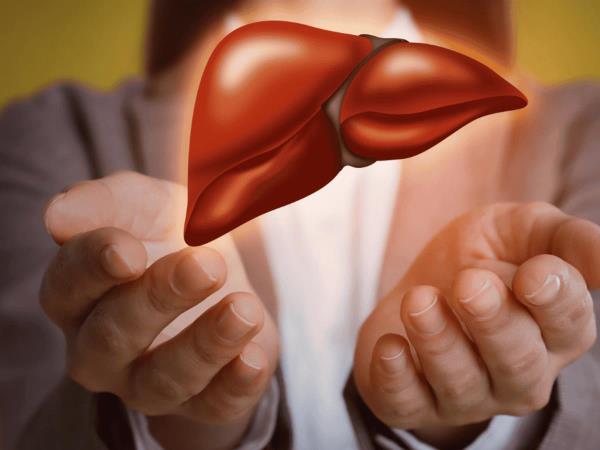Who is most at risk?
The main culprits are obesity, alcoholism, and type 2 diabetes. Not long ago, fatty liver was considered a harmless change, but today we know it can even lead to cirrhosis – a serious, far from benign condition. The numbers speak volumes:
- In Europe, approximately 27% of adults have NAFLD (non-alcoholic fatty liver disease) (32.8% of men and 19.6% of women). Among children and adolescents with excess weight, it is as high as 31.6%.
- Globally, it affects about 30% of the population.
- In developed countries, this figure reaches up to 35%, with 3 to 12% of adults already having a more severe form known as NASH.
- One of the reasons NAFLD is such a significant health problem is its strong link to metabolic syndrome – a combination of high cholesterol, sugar, blood pressure, and excess body weight. These factors only exacerbate the issue.
Diet as a Treatment Tool
In contrast to many diseases where doctors resort to pharmaceuticals, vibrant foods and a balanced lifestyle can be of great help here. And why is that?
- They often replace energy-dense foods, juice boxes, and saturated fats with fruits, vegetables, fiber, and good fats like omega-3. Research shows that patients with steatosis consume these empty calories more frequently than healthy individuals.
- The Mediterranean diet – a combination of olive oil, nuts, fish, fruits, and vegetables – significantly reduces liver fat. One of the most well-known studies, PREDIMED, involving over 7,400 individuals, showed a 30% reduction in cardiovascular events with these diets, and visible health effects within just 5 years. Although PREDIMED is not specifically about fatty liver, the logic is clear: the same guideline is excellent for the liver.
- Fructose (fruit sugar) and other simple carbohydrates should make up a maximum of 10% of total calories – a proven recommendation.
How much do these steps actually help?
If you lose around 7% of your body weight through careful eating and exercise, after a year, the liver histology of people with NASH also improves – meaning a reduction in inflammation and fat inside the liver cells (parenchyma). This is not just theory – it has been proven.
What about dietary supplements?
Rumors suggest that vitamins will save your liver. But the facts are as follows:
- Vitamin E is a potent antioxidant – and antioxidants act as a firefighting unit for the inflammations that cause insulin resistance. This means they reduce oxidative stress in the liver… yet further research on safety and dosages is needed.
- Vitamin D plays a role in regulating inflammation and fibrosis – studies indicate a beneficial effect on insulin sensitivity, but we are still awaiting strong randomized trials.
- Probiotics – the good bacteria that help regulate the gut, indirectly reducing the inflammations triggered in the intestines (a crucial element of the leaky gut theory).
- Omega-3 fatty acids – such as EPA and DHA, have consistently been shown to lower liver enzymes (ALT by 2–8 IU/L, AST by 1–2 IU/L), triglycerides by about 45 mg/dL, and improve cholesterol. A famous meta-analysis from August 2024, covering studies up to June 2023, revealed a statistically significant reduction in ALT and triglycerides. Additionally, the plant-based form of omega-3 (e.g., from flaxseeds) also improves the body mass index (BMI), waist circumference, and significantly decreases ALT levels.
What does the big picture of epidemiology say?
- In Europe, NAFLD is present in nearly 27% of adults; more in men, and as high as 75% in people with metabolic syndrome.
- A cross-European study showed: NAFLD affects around 42% of individuals with HIV (of which 35% have NASH, 13% fibrosis) – emphasizing how widespread this disease is in various populations.
- The prevalence of NAFLD in Europe and the USA is expected to rise to 33.5% by 2030 – affecting over a billion people worldwide.
What can you do?
Reversing fatty liver back to a healthy state is largely in your hands. How? Moderate weight loss (7-10%), a Mediterranean diet, reducing sugars, adding omega-3s and vitamins – this combination shows real changes in the liver, reflected in biopsies. And what's even better: the effects aren't just on the liver but also on the heart, blood sugar, and overall well-being.
The People's Perspective
Many cultures around the world rely on nature (olive oil, nuts, herbs, and fish...) and modern medicine actually upholds this principle in practice. I always emphasize that we are more than just components in a laboratory, so a holistic approach involving traditional wisdom and modern evidence is the best.
We suggest the following step: everyone should make a liver-friendly plan and incorporate two Mediterranean meals a day, swap fats (e.g., butter) for good oils, add omega-3 (e.g., 2-4g per day), and monitor progress through blood tests (ALT/AST, ultrasound). In just a few months, you'll see a difference.
In conclusion...
- NAFLD affects around 30% of the global population, up to 40% in developed countries, more in men than women, and up to 75% in metabolic syndrome.
- Fatty liver is not a benign problem but rather a gateway to more serious diseases – cirrhosis, fibrosis, cancer.
- The solution lies in simple diet, weight loss, and supplements: Mediterranean diet, sugar restriction, losing at least 7% of body weight, omega-3, vitamins E and D, probiotics.
- Clinical data shows a decrease in liver enzymes, improvement in lipids, and reduction in inflammations.









 Would you like to be informed about news on the website?
Would you like to be informed about news on the website?

